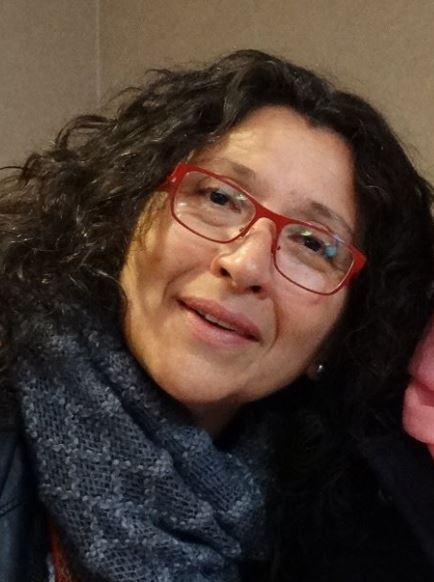- Tags (3)
Structural discrimination Thinking a gender-responsive approach to COVID-19

The current COVID-19 health emergency is exacerbating structural gender inequalities as well as the intersecting dimensions of structural discrimination such as class, race, sexual identities and options, disabilities, migrant status, pregnancy and age, worsening the current situation of the world of work and access to public healthcare services

Verónica Montúfar
This article intends to give a first analysis of the current situation of healthcare women workers and how public healthcare services are increasingly neglecting to consider the sexual and reproductive health needs for women thereby undermining fundamental human rights.
We will be collecting testimonies of healthcare women workers and will be looking to present some alternatives. While consistent gender-desegregated data on the COVID-19 impacts can be produced systematically this will help us to build more empiric evidence.

Women health workers and the challenges they face
PSI World Women's Committee members talk about the challenges in their countries, at home and in the workplace, for women healthcare workers and for all women.
CLICK HERE TO READ MOREGender and the health workforce
According to a 2019 study by the WHO, Gender Equity in the Health Workforce 70% of workers in that sector are women. In the professional areas they are mostly concentrated in nursing. The WHO Gender and Health Workforce statistics (2008) notes
“In general, health occupations were found to be subject to both vertical and horizontal gender imbalances. The proportion of women was considerably higher for occupations at the associate professional level compared to the professional level, and also for nursing and midwifery professionals compared to physicians and other health professionals. In some countries, women represented over 90% of nursing and midwifery personnel”.
The document further states that “marked differences were found in average wages by gender. Women of all cadres tended to earn significantly less than their male counterparts.” In many countries of the Global South, women community volunteers deliver healthcare in precarious working conditions and in some situations are not even recognised as formal public services workers
Women, who are the majority of healthcare workers, are on the very front line of the face-to-face response to COVID-19 emergencies all over the world long working hours, but also earning less than their male counterparts. In many cases, they do not even earn a formal remuneration, or are not considered as part of the emergency system response. Among the gender implications at work must also consider how the emergency affects and creates an environment in which women workers are in a situation of increased vulnerability.
Under quarantine circumstances, long working hours combined with the lockdown measures restricting mobility for families, have placed additional pressure on women as care givers, particularly in the cases of children or elderly people at home. This burden of unpaid care work, which is already disproportionally high in normal times, is putting women under considerable stress in times of crisis.
Long working hours during the emergency also require that Personal Protection Equipment-PPE address the specific needs of women healthcare workers in reproductive age. For example, menstrual hygiene products which may not be easy to buy during working hours. Transportation to and from work during the quarantine is also key to safe working conditions and a world of work free from violence and harassment.
Find out more
Women’s access to public healthcare services
Because of the priority of health services on the COVID-19, there is an evident gap in the access to sexual and reproductive health. Healthcare public services in many countries have collapsed due to the emergency, and women’s access to pre and post-natal healthcare and contraceptives has decreased. This will cause more deaths but also more pregnancies and newborns. Healthcare services are equally needed to deal with rise of domestic violence worldwide due to the quarantine circumstances.
In 2016, a study entitled A gendered human rights analysis of Ebola and Zika: locating gender in global health emergencies exposed that
"the combination of pre-existing biological and socio-cultural factors means that while the health status of populations as a whole deteriorates during complex humanitarian crisis, women and children are especially vulnerable. Domestic violence, as well as broader patterns of sexualized violence against women and girls, have been reported in humanitarian emergency and post-disaster situations. Displaced women and girls face a higher risk of being subjected to forced marriages, domestic violence, and constrained access to resources such as food. In addition, in emergency contexts there may be difficulties in accessing contraceptives, lack of access to obstetric care, and increased neo-natal death rates. In conditions where women face more risk of violence against their bodies, it is an obvious imperative to prioritize gender protection procedures as well as sexual and reproductive health in emergency response planning”.
On the other hand, official reports from all countries are showing that more men are dying due to COVID-19 than women. There is a biological and gendered explanation to this: The Global Health 5050 COVID-19 Statistics reports that “Sex (biology) certainly plays a role. The immune system differences between men and women are well-described, and are known to contribute to responses to infectious diseases. However, biological explanations are likely only part of what is driving inequalities in outcomes. In the six countries reporting sex-disaggregated COVID-19 mortality data, evidence across a range of health behaviors, illness outcomes and life expectancies tend to show a worse picture for men than women.”
Despite this, gender discrimination and secondary roles of women within the household, make them less likely to access healthcare services.
Within the framework of its global campaign, PSI will propose and build on responses formulated with the aim to reduce inequalities at an early stage and to ensure the preservation of human rights in equal conditions for all.